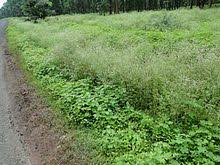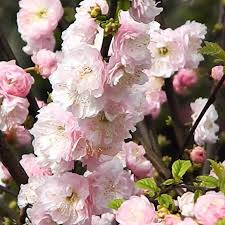In the January issue of the Ohio Nurseryman’s association’s magazine, Tim Wood of Spring Meadow Nursery described the methods to render otherwise invasive ornamental plant species sterile.
Euonymous alatus compactus (Burning Bush), Hibiscus syriacus (Rose of Sharon) multiflora rose and Pyrus calleryana cultivars are all familiar to most gardeners as the seeds that fall or scattered by birds create seedlings coming up everywhere they are not wanted. In fact, the Bradford pear will be banned by Ohio starting in 2023.
In order to eliminate or severely reduce the reproductive nature of invasive plants, several methods can be employed. One such method is the doubling of flowers whereas breeders take advantage of a natural mutation in the plant. In essence, the reproductive parts of the plant are turned into flower petals. The advantage for the ornamental quality of certain plants is that they bloom longer with more flowers, as seed that might form does not get in the way of flowers.
Breeding male plants of dioecious plants is another method of controlling invasive plants. Unfortunately, this method only works on plants that are dioecious (male and female flowers are on different plants) such as bittersweet and holly. Again, an advantage to such a specialty bred plant in that no seed or fruit makes for faster growth and denser growth to give the sterile plant more appeal.
A third method of producing sterility is to make wide crosses between distantly related plants. For sure if they are too distant, no cross can be made. Golden Vicary privet and the butterfly bush are all examples of the “many-cross method”. In fact, the state of Oregon banned butterfly bush from nursery production but now does differentiate between those that are sterile cultivars such as the Lo and Behold series.
Method four is one of producing a triploid or extra set of chromosomes that causes sterility in a plant. By using gamma radiation or cholchicine, the plant mutates. Even a doubling of the chromosomes can occur which is then called a tretaploid. This technique was used to produce the seedless watermelon, seedless forms of ornamentals like the Norway Maple, certain barberries, bittersweet and so on!
There is now an effort going on to “cure” the invasive Bradford pear as well as other species.
Promoting an exclusive native plant policy is not practical, many foreign species are quite beautiful and most are not invasive.
Many non-native species are also resistant to deer browsing and various insects that results in less use of chemical control of pest and disease problems. Many of the plants too are used in breeding with related native species.
Hopefully, State legislators that are considering legislation to control invasive species will be able to differentiate between the invasive ones of the genus and those cultivars that are not invasive.

